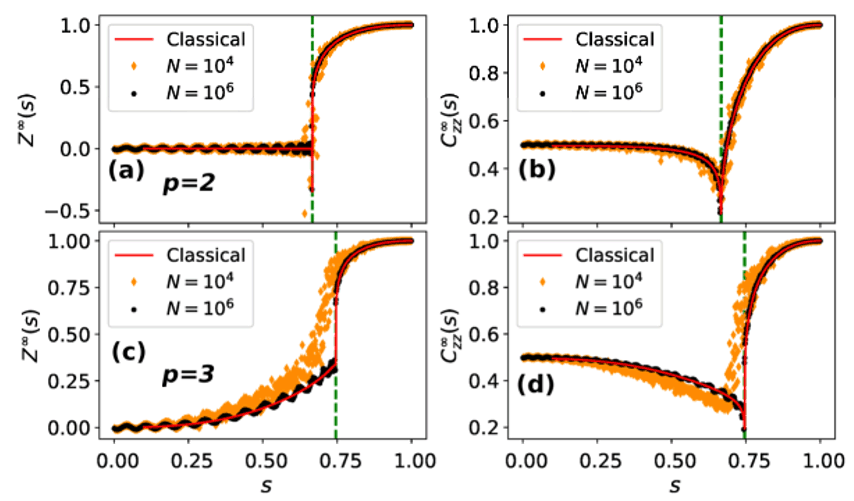Using measurement and feedback control to simulate complex mean field spin dynamics in quantum systems
August 17, 2020 - Pablo Poggi

In physical systems composed of many parts, like ultracold atomic ensembles, electrons in a superconductor, or arrays of superconducting circuits, complex dynamics emerges when the different parts of the system interact with each other. Even though typical low-energy interactions found in nature are of two-body nature, considering higher order interactions can lead to novel complex phenomena which could be studied in quantum simulators. In fact, achieving programmable simulation of many-body interactions is a central goal of near-term quantum information processing devices.
Recent work from CQuIC led by PhD student Manuel Muñoz-Arias and FRHTP postdoc Pablo Poggi together with Professors Poul Jessen and Ivan Deutsch, demonstrated the viability of combining quantum measurements and feedback control to program the simulation of a family of spin systems called “p-spin models” which exhibit complex nonlinear dynamics related to the mean-field interaction of p bodies. [1]. In particular it was shown how this simulation scheme can be used to investigate the emergence of phenomena such as dynamical phase transitions, which are drastic changes on the macroscopic motion of a system as a single parameter is varied, and spontaneous symmetry breaking in adiabatic evolution induced by measurement. The proposal is particularly suited to explore such signatures of critical phenomena in simple systems such as ensembles of utlracold atoms subject to global measurements and control. The work gives a fresh twist to the well-established toolbox of quantum feedback control, previously studied in quantum optics, and extend this tool to explore a broad scope of physical phenomena.
This research has been published in Physical Review A, and can be accessed in https://journals.aps.org/pra/abstract/10.1103/PhysRevA.102.022610
Simulation of dynamical phase transitions in the mean field dynamics using quantum measurements and feedback (black and orange symbols). (a) and (c) show long-time average magnetization as a function of the external field. Sharp change indicates the phase transition. (b) and (d) show the same feature for a long-time average expectation value of a two-body operator. Results are to be comparead with the exact mean-field solution (solid red line).
[1] Manuel H. Muñoz-Arias, Ivan Deutsch, Poul Jessen, Pablo Poggi, “Simulation of the complex dynamics of mean-field p-spin models using measurement-based quantum feedback control”, Phys. Rev. A 102, 022610 (2020)
